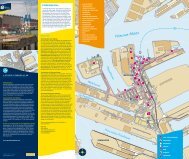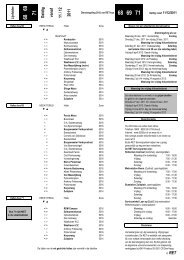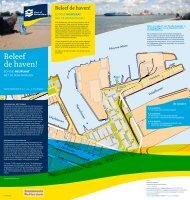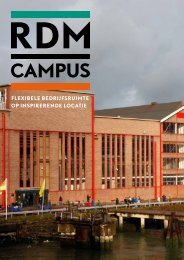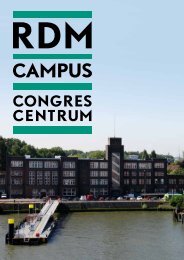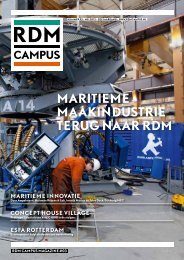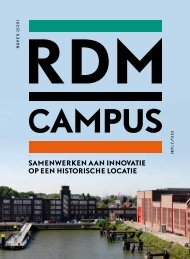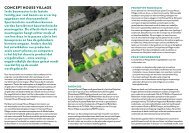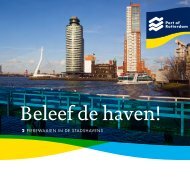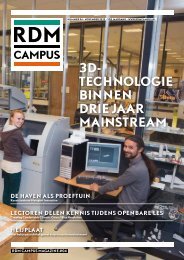Creating Comfortable Climatic Cities - RDM Campus
Creating Comfortable Climatic Cities - RDM Campus
Creating Comfortable Climatic Cities - RDM Campus
Create successful ePaper yourself
Turn your PDF publications into a flip-book with our unique Google optimized e-Paper software.
14 <strong>Creating</strong> <strong>Comfortable</strong> <strong>Climatic</strong> <strong>Cities</strong>15<strong>Creating</strong> <strong>Comfortable</strong> <strong>Climatic</strong> <strong>Cities</strong>Image 2.Heat stress in the Dutch polder [Anninga-GPD, 2008]Image 3.Hot summer day in the city of Rotterdam[JB_NL, 2012]02. Contemporary SustainabilityIssues and OpportunitiesTo develop strategies for ‘positive development’ we need a broad understanding of thekey issues that will continue to shape the landscape of design. Our global environment,the human condition and the natural world are undergoing extensive changes at anastounding rate. Trying to balance the earth’s ability to provide biological sustenancewith a growing human population, and to simultaneously nurture a ‘better life’ forhumans, is a truly daunting task. This task is made immeasurably more difficultagainst the background of climate change (Faud-Luke, 2009).Image 4.Flooding of the Westersingel, Rotterdam, 2009 [DCMR Environmental Protection Agency, 2009]Climate changeIn 2006, Al Gore captured the imagination of the world with his epic documentaryAn Inconvenient Truth. The basis of his discourse revolves around the fact that mostgovernments do not include the true costs of climate change in their models ofeconomic development. At the same time, Sir Nicholas Stern (2006) published a reportfor the UK government predicting that if we take immediate action, it will take 1 – 2%of global GDP to avert the worst consequences of climate change, compared with 15 –20% if we do nothing. Although design activists had been voicing these concerns forat least thirty years, Gore and Stern finally captured the attention of leaders all overthe world (Faud-Luke, 2009).In the very same year, the KNMI (Royal Netherlands Meteorological Institute)predicted the possible effects of climate change for the Netherlands using simulationmodels and climate scenarios. In the most pessimistic scenario, the effects on thelow-lying delta cities will be immense. The amount of water cities will have to dealwith, in the form of rising sea level, increased precipitation and freshwater fromthe mountains in bordering countries, will increase radically. Besides the effects onurban water, the region will be affected by an average increase in temperature of2 º C by 2050 and up to 3 º C this century, resulting in a similar climate to modern dayLyon in the south of France (van den Dobbelsteen et al., 2011) (see Image 2, 3 and 4). The KNMIexpects more climatic variation: winters are expected to be milder and wetter due toincreasing westerly winds, while summers are expected to become hotter and dryerdue to increasing easterly winds. The effect of the latter will be that cites will dry outeven more, making seasonal buffering more important in the future. In 2007, the UN’sIntergovernmental Panel on Climate Change (IPCC) predicted a global temperaturerise of 6.4 º C by 2100. The effects of climate change will undoubtedly impact heavilyon urban transformation in the 21 st century.In the summer of 2011, a record high temperature difference of +7 º C was measuredbetween the inner city of Rotterdam and the surrounding countryside. Thisphenomenon, known as the heat island effect, is caused by thermal accumulation,heat emitted by vehicles, buildings and industry, and insufficient urban green.Factors that influence this are the absorption and retention of heat by the urban



